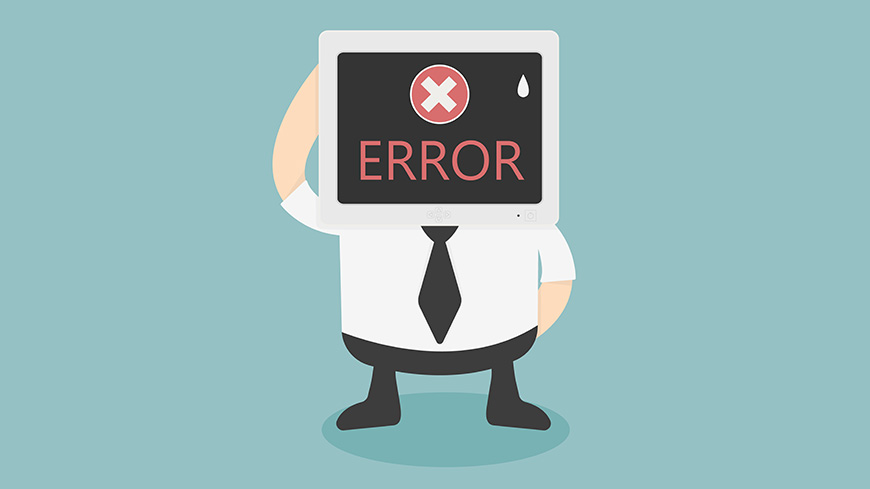Are you encountering the troublesome “errordomain=nscocoaerrordomain&errormessage=could not find the specified shortcut.&errorcode=4” error and feeling unsure about how to resolve it? Fret not; we’ve got your back. This comprehensive guide will walk you through the potential causes of this error and offer straightforward solutions to help you rectify it.
Understanding the Error
The “errordomain=nscocoaerrordomain&errormessage=could not find the specified shortcut.&errorcode=4” error typically arises when an application fails to locate a specific shortcut or resource. This can result in application crashes or unexpected behavior, causing frustration and disrupting productivity.
Causes of Errordomain=NSCocoaErrorDomain&ErrorMessage=Could Not Find the Specified Shortcut.&ErrorCode=4
Several factors may contribute to this error, including:
- Corrupted application files
- Deleted or missing resources
- Broken registry keys
- Outdated operating system or application
- Malware or virus infections
Common Scenarios of the Error
This error can manifest in various scenarios, such as:
- When opening an application
- Accessing specific features within an application
- Running a script or program
- Interacting with files or resources on your computer
Prevention Tips
To avert the “errordomain=nscocoaerrordomain&errormessage=could not find the specified shortcut.&errorcode=4” error, consider adopting these best practices:
- Regularly update your operating system and install applications.
- Employ a reliable antivirus program.
- Maintain a clean and malware-free computer environment.
- Regularly back up your data.
Resolving Errordomain=NSCocoaErrorDomain&ErrorMessage=Could Not Find the Specified Shortcut.&ErrorCode=4
Solution 1: Perform a System Restore
A system restore can assist in reverting your computer to a previous functioning state. Here’s how to do it:
- Click the Start button and type “System Restore” in the search box.
- Select “Create a restore point” from the search results.
- Click the “System Restore” button.
- Follow the on-screen instructions to select a restore point and complete the process.
Solution 2: Reinstall the Application
Reinstalling the problematic application can help rectify issues stemming from corrupted or missing files. Follow these steps:
- Uninstall the application by navigating to the Control Panel, clicking on “Programs and Features,” and selecting the application from the list.
- Download the latest version of the application from the official website.
- Install the application by following the on-screen instructions.
Solution 3: Restore Deleted Files
If the error results from missing or deleted files, you can attempt file recovery using a file recovery tool. Here’s how:
- Download and install a reputable file recovery tool, such as Recuva or EaseUS Data Recovery Wizard.
- Launch the file recovery tool and follow the on-screen instructions to recover deleted files.
Solution 4: Fix Broken Registry Keys
Broken or corrupt registry keys can trigger errors. You can utilize a registry cleaner tool to address this issue. Follow these steps:
- Download and install a reliable registry cleaner tool, such as CCleaner or Wise Registry Cleaner.
- Launch the registry cleaner tool and perform a registry scan.
- Follow the on-screen instructions to rectify any detected issues.
Solution 5: Update Your Operating System and Applications
Keeping your operating system and applications up to date can mitigate errors. Execute the following steps to update your system:
- Click the Start button and type “Windows Update” in the search box.
- Select “Check for updates” from the search results.
- Follow the on-screen instructions to install any available updates.
Additionally, regularly update your installed applications by checking for updates within the application or visiting the developer’s website.
Solution 6: Use Reliable Antivirus Programs
Malware or virus infections can be a source of errors. Ensure you employ a dependable antivirus program to safeguard your computer. Here’s how:
- Download and install a reputable antivirus program, such as Norton, Bitdefender, or Avast.
- Run a full system scan to detect and remove any threats.
- Keep your antivirus software updated and perform regular system scans.
Conclusion
The “errordomain=nscocoaerrordomain&errormessage=could not find the specified shortcut.&errorcode=4” error may be frustrating, but with the solutions provided in this article, you should be equipped to resolve it. Remember to keep your system and applications up to date, utilize trustworthy antivirus software, and adhere to good computer maintenance practices to prevent similar errors in the future. If the issue persists despite attempting the solutions outlined here, consider seeking assistance from professional tech support services or the application’s developer.
Now that you have a better grasp of the error and how to address it, you can confidently tackle the issue and return to uninterrupted computer usage. Best of luck, and happy troubleshooting!

